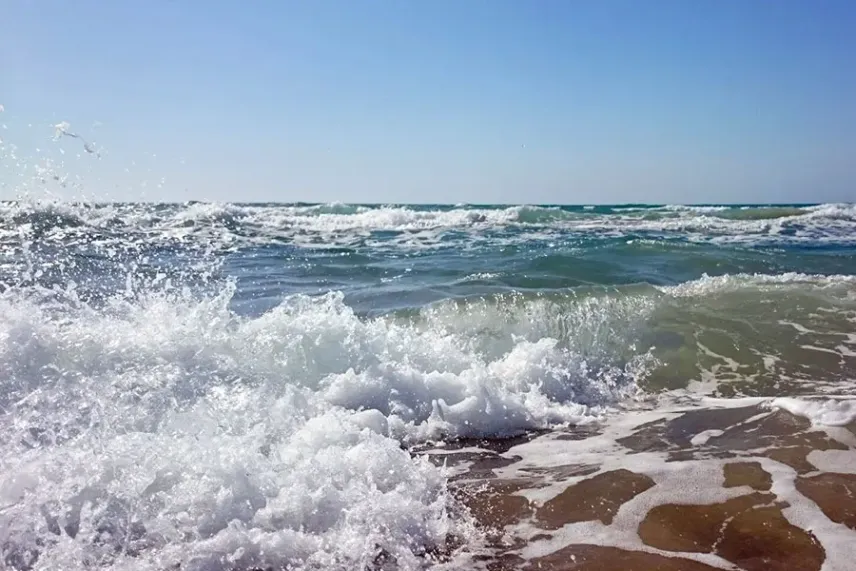
Summer Vacation on the Azov Sea
Rest on the Azov Sea is a wonderful option for spending a summer vacation. The Azov Sea is a unique natural reservoir with a mild climate, on the coast of which there are many resorts and recreation areas. You can have a good rest on the Azov Sea both in comfortable conditions and practically "savage" – at the resorts of the Azov Sea there are a large number of different offers of housing and entertainment for vacationers, so everyone can choose acceptable options for recreation on the Azov Sea. One of the main features of the Azov Sea is the mild climate on its coast, which is the best fit for summer holidays with children at sea.
Resorts of the Azov Sea
You can have a good rest on the coast of the Azov Sea in Berdyansk, Urzuf, Genichesk, Melekino, as well as in Taganrog, Yeisk, Temryuk, the villages of Golubitskaya and Dolzhanskaya and in other settlements. Almost all along the coast of the Azov Sea in all settlements there are many boarding houses, hotels, sanatoriums, rest houses, tourist centers and simply rented housing, so everyone can choose a vacation in Azov according to their desires and means. Separately, one can single out a large resort city on the Azov Sea – Berdyansk, which is not only a resort, but also an industrial center and a seaport on the Azov Sea. But the industry of Berdyansk does not interfere with vacationers – at their service is an almost 20 km long beach located on the Berdyansk Spit – one of the largest sandy spits of the Azov Sea. The entire Berdyansk Spit, in fact, is a series of tourist centers, hotels and many private housing, which is rented to vacationers, and the entire coast of the Berdyansk Spit, directed to the open sea, is a huge sandy beach. More information about resorts and recreation on the Sea of Azov can be found on the website azow.net, which is a guide to resorts and other attractions of the Sea of Azov and the entire region.
The Braids of the Azov Sea
The braids of the Azov Sea are its kind of visiting card. For example, the nearby Black Sea has a completely different type of coast, regardless of what rocks the coast consists of. The coast of the Azov Sea is a series of bays, separated by sandy peninsulas – spits, protruding far into the sea. Due to its remoteness from the main coast, the spits of the Azov Sea are a favorite vacation spot on the Azov Sea – it is on the spits in the Azov Sea that the cleanest sandy beaches and the best places for summer holidays are located.
Fish of the Azov Sea
The Azov Sea has always been rich in various species of fish. This was largely due to the fact that large rivers flowed into the Azov Sea, which carried large volumes of fresh water and fish from which could safely swim from the mouths of the rivers into the Azov Sea. There are several types of fish in the Azov Sea – sturgeon fish that spawn in the floodplains of rivers – sturgeon, rybets, beluga, stellate sturgeon and others, fish spawning in the lower reaches of rivers – carp, bream, pike perch, ram, as well as fish that lives in the Azov sea – goby, tulka, flounder, and, finally, fish from the Black Sea – anchovy and herring. In the second half of the 20th century, pilengas was artificially populated from the Far East in the Azov Sea – one of the species of mullet, which has now spread to the Black Sea, and in the Azov Sea it has become one of the dominant fish species, displacing the native fish of the Azov Sea. Unfortunately, in the 70s of the XX century, due to a sharp restriction of the supply of fresh water from large rivers, caused by the short-sighted policy of the then leadership of the state, salt water from the Black Sea began to flow into the Azov Sea, significantly increasing the salt content in the water of the Azov Sea, what influenced the fish of the Azov Sea, but the most unpleasant thing is that jellyfish, which had never been in the Azov Sea before, and which are a small nuisance for those who want to relax in the summer on the Azov Sea, got from the Black Sea to the Azov Sea.